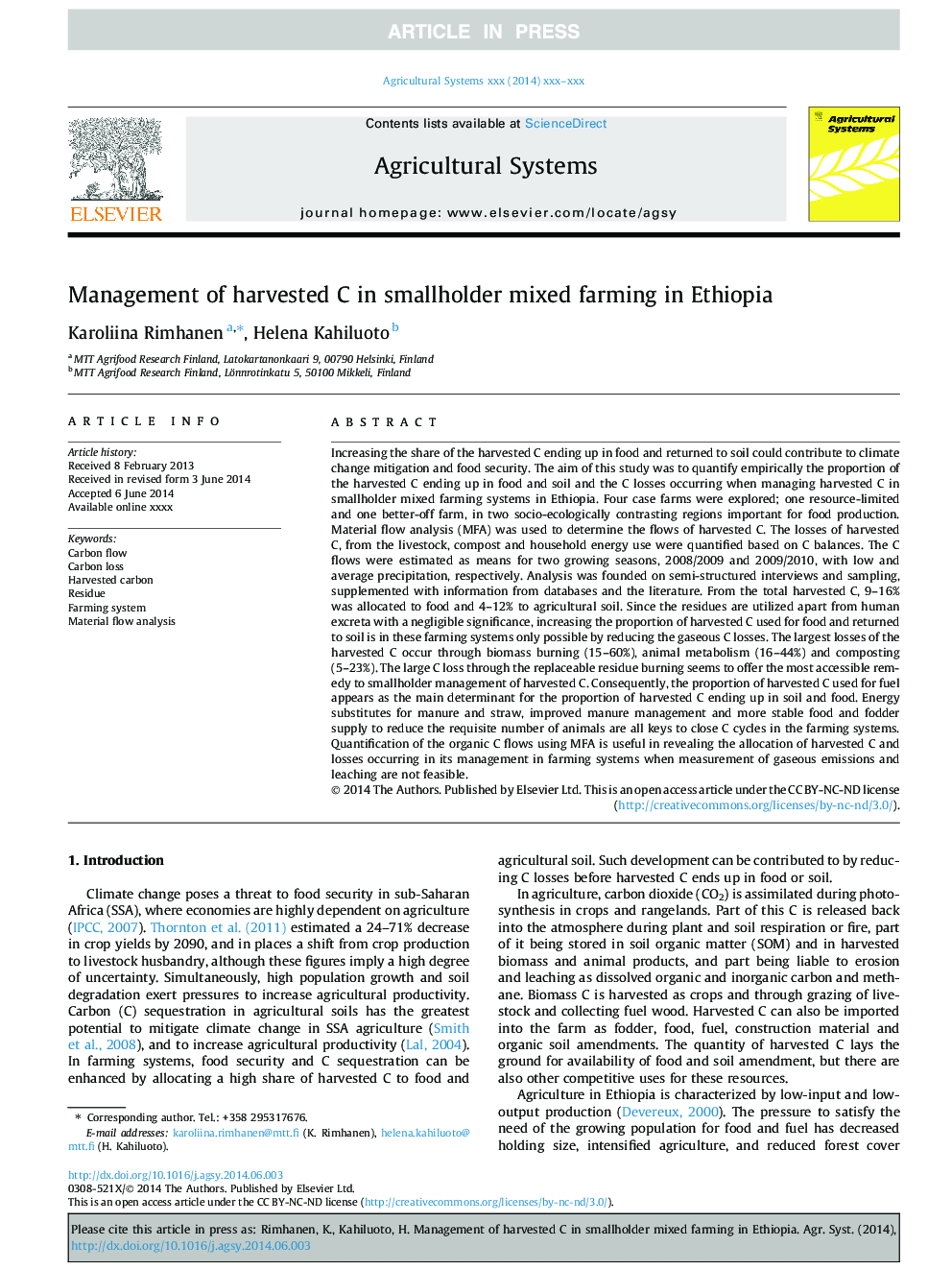| کد مقاله | کد نشریه | سال انتشار | مقاله انگلیسی | نسخه تمام متن |
|---|---|---|---|---|
| 6368541 | 1623240 | 2014 | 10 صفحه PDF | دانلود رایگان |
عنوان انگلیسی مقاله ISI
Management of harvested C in smallholder mixed farming in Ethiopia
دانلود مقاله + سفارش ترجمه
دانلود مقاله ISI انگلیسی
رایگان برای ایرانیان
کلمات کلیدی
موضوعات مرتبط
علوم زیستی و بیوفناوری
علوم کشاورزی و بیولوژیک
علوم کشاورزی و بیولوژیک (عمومی)
پیش نمایش صفحه اول مقاله

چکیده انگلیسی
Increasing the share of the harvested C ending up in food and returned to soil could contribute to climate change mitigation and food security. The aim of this study was to quantify empirically the proportion of the harvested C ending up in food and soil and the C losses occurring when managing harvested C in smallholder mixed farming systems in Ethiopia. Four case farms were explored; one resource-limited and one better-off farm, in two socio-ecologically contrasting regions important for food production. Material flow analysis (MFA) was used to determine the flows of harvested C. The losses of harvested C, from the livestock, compost and household energy use were quantified based on C balances. The C flows were estimated as means for two growing seasons, 2008/2009 and 2009/2010, with low and average precipitation, respectively. Analysis was founded on semi-structured interviews and sampling, supplemented with information from databases and the literature. From the total harvested C, 9-16% was allocated to food and 4-12% to agricultural soil. Since the residues are utilized apart from human excreta with a negligible significance, increasing the proportion of harvested C used for food and returned to soil is in these farming systems only possible by reducing the gaseous C losses. The largest losses of the harvested C occur through biomass burning (15-60%), animal metabolism (16-44%) and composting (5-23%). The large C loss through the replaceable residue burning seems to offer the most accessible remedy to smallholder management of harvested C. Consequently, the proportion of harvested C used for fuel appears as the main determinant for the proportion of harvested C ending up in soil and food. Energy substitutes for manure and straw, improved manure management and more stable food and fodder supply to reduce the requisite number of animals are all keys to close C cycles in the farming systems. Quantification of the organic C flows using MFA is useful in revealing the allocation of harvested C and losses occurring in its management in farming systems when measurement of gaseous emissions and leaching are not feasible.
ناشر
Database: Elsevier - ScienceDirect (ساینس دایرکت)
Journal: Agricultural Systems - Volume 130, September 2014, Pages 13-22
Journal: Agricultural Systems - Volume 130, September 2014, Pages 13-22
نویسندگان
Karoliina Rimhanen, Helena Kahiluoto,